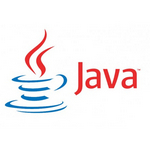
如何在Java中使用集合框架函数进行集合的增删改查
引言:
在Java编程中,集合是常见且重要的数据结构。在处理数据时,使用集合可以方便地进行增删改查等操作。Java提供了丰富的集合框架函数,本文将介绍如何使用这些函数来进行集合的增删改查操作,并提供具体的代码示例。
一、集合的创建与初始化
在Java中,集合可以使用ArrayList、LinkedList、HashSet等类进行创建与初始化。下面是几种常见的方式:
使用ArrayList创建集合,并初始化数据:
立即学习“Java免费学习笔记(深入)”;
import java.util.ArrayList;
ArrayList<String> list = new ArrayList<String>();
list.add("apple");
list.add("banana");
list.add("orange");使用LinkedList创建集合,并初始化数据:
import java.util.LinkedList;
LinkedList<String> list = new LinkedList<String>();
list.add("apple");
list.add("banana");
list.add("orange");使用HashSet创建集合,并初始化数据:
import java.util.HashSet;
HashSet<String> set = new HashSet<String>();
set.add("apple");
set.add("banana");
set.add("orange");二、集合的增加操作
在集合中添加元素的操作使用add()方法,我们可以使用集合提供的方法来增加元素。下面是几种常见的操作:
向ArrayList中添加元素:
list.add("mango");
list.add(2, "grape");向LinkedList中添加元素:
list.add("mango");
list.addFirst("strawberry");向HashSet中添加元素:
set.add("mango");
set.add("grape");三、集合的删除操作
在集合中删除元素的操作使用remove()方法,通过指定元素来删除。下面是几种常见的删除操作:
从ArrayList中删除元素:
list.remove("apple");
list.remove(1);从LinkedList中删除元素:
list.remove("apple");
list.removeFirst();从HashSet中删除元素:
set.remove("apple");四、集合的修改操作
集合的修改操作需要通过索引或者指定元素进行修改。下面是几种常见的修改操作:
修改ArrayList中的元素:
list.set(0, "pear");
修改LinkedList中的元素:
list.set(1, "pear");
修改HashSet中的元素(HashSet不支持修改操作,需要先删除再添加):
set.remove("apple");
set.add("pear");五、集合的查询操作
集合的查询操作可以通过索引或者指定元素进行查询。下面是几种常见的查询操作:
查询ArrayList中的元素:
String element = list.get(0);
查询LinkedList中的元素:
String element = list.get(1);
查询HashSet中的元素(HashSet没有索引,需要通过迭代器方式进行查询):
Iterator<String> iterator = set.iterator();
while (iterator.hasNext()) {
String element = iterator.next();
// 进行元素的操作
}结论:
本文介绍了如何使用Java集合框架函数进行集合的增删改查操作。通过这些操作,我们可以很方便地对集合进行相应的操作。集合的增删改查是Java开发中常见的操作,掌握这些操作可以提高代码的效率与可读性。希望本文能够帮助读者更好地理解和运用集合框架函数。
以上就是如何在Java中使用集合框架函数进行集合的增删改查的详细内容,更多请关注php中文网其它相关文章!

java怎么学习?java怎么入门?java在哪学?java怎么学才快?不用担心,这里为大家提供了java速学教程(入门到精通),有需要的小伙伴保存下载就能学习啦!

Copyright 2014-2025 https://www.php.cn/ All Rights Reserved | php.cn | 湘ICP备2023035733号